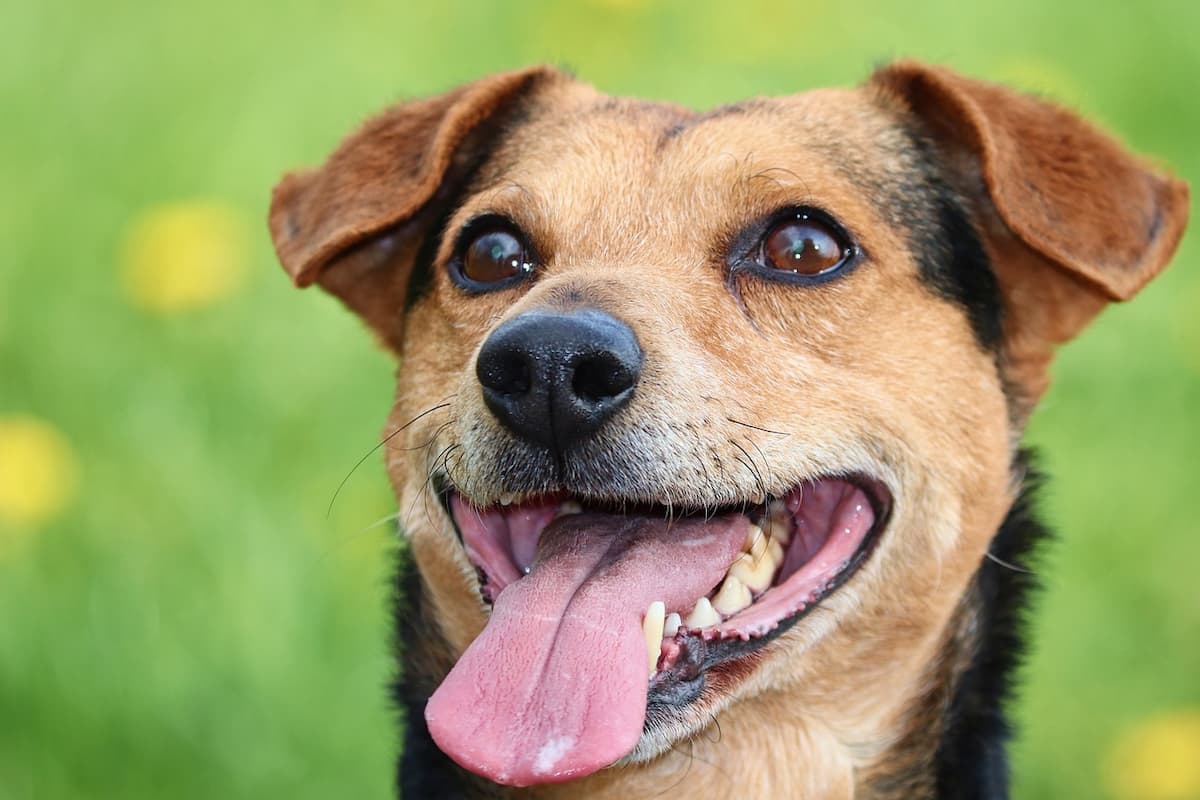Have you ever wondered why dogs sometimes start panting as if they’ve just finished a marathon?
Well, today we’re diving into the fascinating world of doggy hyperventilation.
Picture this: you’re chilling on the couch, engrossed in your favorite TV show, when suddenly your furry friend plops down beside you, tongue hanging out, and takes rapid, shallow breaths.
Before you start worrying about the extra laps they’re doing behind your back, read on to uncover the reasons behind this seemingly perplexing behavior.
Recognizing Hyperventilation in Dogs
One thing that all dog owners can agree on is that our furry friends have their own unique way of communicating with us.
Sometimes it’s through their playful antics, their wagging tails, or even their excited barks.
However, when it comes to certain behaviors, it can be harder to interpret what our dogs are trying to tell us.
One such behavior that can be concerning for dog owners is hyperventilation.
Hyperventilation in dogs occurs when they breathe at an abnormally rapid rate, taking in more oxygen than their bodies need.
This can be caused by a variety of factors, ranging from physical exertion and excitement to anxiety and stress.
Recognizing the signs and symptoms of hyperventilation in dogs is crucial for their well-being.
Here are some key indicators to look out for:
Rapid and shallow breathing: Dogs experiencing hyperventilation often breathe quickly and with shallow breaths.
Their breathing may appear labored or exaggerated compared to their normal respiration.
Panting excessively: While panting is a normal behavior for dogs, excessive panting can be a sign of hyperventilation.
If your dog is panting heavily and the environment is not excessively hot or stressful, it could be a cause for concern.
Restlessness and agitation: Dogs may exhibit signs of restlessness and agitation when they are hyperventilating.
They may pace, whine, or seem unable to settle down.
Understanding the Triggers of Dog Hyperventilation
Have you ever noticed your dog panting heavily, gasping for breath, and looking distressed?
It could be a case of dog hyperventilation, a condition that can be triggered by various factors.
Understanding the causes behind your furry friend’s hyperventilation is crucial in order to address the issue and ensure their well-being.
1. Heat and Exercise
One common cause of dog hyperventilation is an increase in body temperature.
Dogs don’t have sweat glands like humans do, so they rely on panting to cool themselves down.
When your furry friend is exposed to excessive heat or engages in vigorous exercise, their body temperature rises, leading to hyperventilation as their way of cooling off.
Keep a close eye on your pup during hot summer days or intense play sessions and make sure they have access to shade, water, and a cool environment to prevent overheating and subsequent hyperventilation.
2. Physical Exertion
Just like humans, dogs need to engage in physical activity to maintain a healthy weight and overall well-being.
However, some activities can push their bodies to the limit, causing them to pant frantically.
This could include long walks, intense runs, or intense play sessions, especially in hot or humid weather.
When dogs engage in such strenuous activities, their breathing rate naturally increases to regulate their body temperature.
However, if they exceed their capacity to regulate their respiratory system, hyperventilation can occur.
It’s important to ensure that your dog gets enough rest and doesn’t overexert themselves to prevent this issue.
3. Anxiety and Stress
Dogs, just like humans, can also experience anxiety and stress, which may manifest in hyperventilation.
Separation anxiety, fear, loud noises, or unfamiliar environments can all trigger excessive panting and rapid breathing in dogs.
It’s important to identify and address the root causes of your dog’s anxiety to create a safe and peaceful environment for them.
Providing a comfortable, secure space, using calming techniques like music or aromatherapy, and seeking professional help if needed, can all help alleviate your furry friend’s stress and reduce episodes of hyperventilation.
4. Medical Conditions
In some cases, dog hyperventilation can be a symptom of an underlying medical condition.
Respiratory problems, heart disease, asthma, or infections may lead to difficulties in breathing, causing your dog to pant excessively.
If you notice persistent or worsening hyperventilation, along with other concerning symptoms like coughing, lethargy, or loss of appetite, it’s important to consult with your veterinarian.
They can perform a thorough examination, run diagnostic tests, and provide the necessary treatment to address the underlying health issue and improve your furry friend’s breathing and overall well-being.
FAQ
Q: What does it mean when a dog hyperventilates?
A: Hyperventilation in dogs refers to an excessively rapid breathing pattern, often accompanied by heavy panting or breathing with an open mouth.
It is a way for our canine companions to regulate their body temperature and cool themselves down when they’re feeling hot or exerting energy.
Q: Why do dogs pant so much?
A: Dogs don’t sweat like humans, so panting is their way of releasing heat and cooling off.
Unlike us, their primary method of losing excess body heat is through their tongue and respiratory system.
Panting increases the air circulation in their bodies, causing evaporation of moisture in their mouth and respiratory tract, which helps dissipate the heat.
Q: Are there specific situations that can trigger hyperventilation in dogs?
A: Absolutely!
Dogs may hyperventilate when they’re excited, anxious, fearful, or stressed.
It could happen during intense play, high-energy activities, or moments of anticipation.
Additionally, certain medical conditions or diseases can also cause episodes of hyperventilation in dogs.
If you notice abnormal or persistent panting, it’s always best to consult with a veterinarian to rule out any underlying health issues.
Q: Can hyperventilation in dogs be a sign of distress or illness?
A: In some cases, yes.
While panting is a normal response to heat or exercise, excessive or prolonged hyperventilation might signify an underlying health problem.
Obstruction in the airways, heart disease, anemia, lung disorders, pain, or fever are just a few possibilities.
If your dog is hyperventilating excessively or if it seems unusual, it’s essential to seek professional advice and get them checked by a vet.
Q: Can I help my dog when they’re hyperventilating?
A: Absolutely!
If your dog is hyperventilating due to overheating, you can offer them cool water, provide a shaded area, or even use a wet towel to gently cool their body.
It’s important not to panic or fuss over them too much, as that might increase their anxiety.
However, in cases where hyperventilation is severe, prolonged, or accompanied by other worrying symptoms, consulting a veterinarian is the best course of action.
Q: Are there any breathing techniques that can calm a hyperventilating dog?
A: Yes, there are some simple breathing techniques that you can try to help calm your dog down during moments of hyperventilation.
By gently and gradually breathing into their nose and out through their mouth, you can help slow down their breathing pattern.
Additionally, creating a relaxed atmosphere, petting them gently, or distracting them from the source of their anxiety can also be helpful.
Q: Can I prevent hyperventilation in my dog altogether?
A: While you can’t eliminate normal panting in dogs, you can take steps to prevent excessive hyperventilation.
Providing plenty of fresh water and shade is essential, especially during hot weather or vigorous activities.
Regular exercise, mental stimulation, and training can help your dog develop better coping mechanisms for anxiety or excitement, reducing the likelihood of hyperventilation.
If your dog is prone to hyperventilation due to an underlying health condition, your vet may recommend specific treatments or lifestyle adjustments.
Remember, understanding why dogs hyperventilate allows us to ensure they’re comfortable and healthy.
Observing their breathing habits and seeking professional advice when necessary will help us be the best companions to our furry friends.
Farewell Thoughts
While hyperventilation in dogs can be a worrisome sight, it’s vital to remember that it can often be a sign of something as simple as excitement or intense physical activity.
However, it’s always crucial to observe our furry buddies closely and ensure their well-being.
Remember, if you notice your dog hyperventilating excessively or in distress, it’s essential to seek professional advice from your veterinarian.
They’ll be able to provide a thorough examination and determine the underlying cause, helping your furry friend back to their happy, panting selves.
So, next time you find your furry friend hyperventilating, take a deep breath yourself and remember that dogs, just like humans, have their own unique ways of expressing themselves.
Appreciate their zest for life and be by their side to ensure their well-being every step of the way. After all, our bond with our dogs is nothing short of extraordinary.












